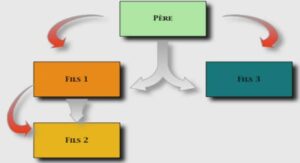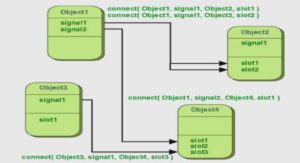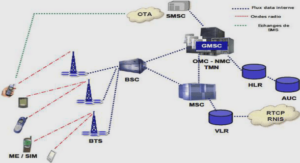Valorisation de remèdes traditionnels utiles dans le traitement de la ciguatéra dans le Pacifique
CLINICAL MANIFESTATIONS
The clinical presentation of CFP (Table 6) has been addressed in substantial detail by various authors around the world (Arena et al. 2004; Bagnis et al. 1979; Cheng and Chung 2004; de Haro et al. 1997; 2003; Dickey 2008; Geller et al. 1991; Gillespie et al. 1986; Friedman et al. 2008; Farstad and Chow 2001; Goodman et al. 2003; Kipping et al. 2006; Laurent et al. 2005, Lehane and Lewis 2000; Katz et al. 1993; Ng and Gregory 2000; Nicholson and Lewis, 2006; Ruff and Lewis 1994). Globally more than 175 acute and chronic gastrointestinal, neurological and/or generalized disturbances, and to a lesser extent, cardiovascular symptoms have been described (Wang 2008). The symptoms of ciguatera vary in different oceans, attributable to regional (P-, C- and I-) suite of toxins. In the Pacific Ocean neurological symptoms predominate, while in the Caribbean Sea the gastrointestinal symptoms are dominant features. The toxins from Indian Ocean give rise to symptoms that are typical of CFP in the Pacific, in addition to neuropsychiatric alterations (Friedman et al. 2008; Lehane and Lewis 2000; Lewis 2001; 2006). However, the nature, duration, and the severity of symptoms can also vary after a meal of fish captured within a restricted location. This is likely to stem from individual susceptibility, and from the quantity and type of CTXs consumed, influenced by the type (herbivorous, carnivorous) and part (head, liver, viscera, or flesh) of fish consumed (de Fouw et al. 2001; Glaziou and Martin 1993; Lewis 2001; Lewis et al. 2000).
PHARMACOLOGY AND TREATMENT
Mode of Action
Pharmacological studies have revealed that CTXs act on voltage-sensitive sodium channels (VSSC) present on most excitable and some non-excitable cells (Al-Sabi et al. 2006; Lewis et al. 2000; Nicholson and Lewis 2006; Rayner 1972; Wang 2008). Like PbTxs, CTXs bind directly to site 5 on the αsubunit of VSSC (Dechraoui et al. 1999; Lombet et al., 1987; Poli et al. 1986), causing them to open at normal cell resting membrane potential. One of the wellestablished consequences of this activation is the influx of sodium ions (Na+ ), which induces membrane depolarization (Benoit et al. 1986; Bidard et al. 1984) and causes spontaneous firing in a variety of nerve fibers (Bidard et al. 1984; Benoit and Legrand 1992; 1996; Brock et al. 1995; Hamblin et al. 1995; Hogg et al. 1998; Molgó et al. 1990). The Na+ influx results in osmotic deregulation inducing water influx that leads to edema of Schwann cells (Allsop et a. 1986) and axons (Benoit et al. 1996; Mattei et al. 1997; 1999). Activation of VSSC by P-CTX-1B has also been shown to lead to direct mobilisation of calcium ions (Ca2+) from internal stores (Lewis and Endean 1986; Molgó et al. 1992; 1993a) and to an indirect activation of the Na+ -Ca2+ exchanger allowing Ca2+ influx against Na+ efflux (Molgó et al. 1993b; Gaudry-Talarmain et al. 1996). An elevation in cytosolic Ca2+ may promote neurosecretion believed to underpin certain CFP symptoms (Mattei et al. 2008; Nicholson and Lewis 2006). Recent studies suggest that CTXs may also modulate voltage-sensitive potassium channels that most likely contribute to membranes depolarization caused by CTX-activated VSSC (Hidalgo et al. 2002; Nicholson and Lewis 2006; Birinyi-Strachan et al. 2005). Yet another recent study demonstrated the action of CTXs on the L-type calcium channels resulting in the swelling of frog erythrocytes (Sauviat et al. 2006). Though CTXs seldom accumulate in fish at levels that are lethal to humans, explaining the low mortality, they are extremely potent in that at nanomolar and picomolar concentrations they are able to activate the VSSC in cell membranes (Lewis et al. 2000). Therefore, as sodium channels are widely spread in nerve and muscle tissue, the depolarization of these cells is believed to be the cause of the array of sensorial polyneuropathies and myopathy associated with CFP (Friedmann et al. 2008; Nicholson and Lewis 2006).
2.5.2. Occidental Medicine
The treatment of CFP in the occidental medicine remains mainly symptomatic and supportive. Depending on the clinical 28 Article 1: Introduction générale symptoms a patient may present; a number of medications are prescribed (Table 7). Intravenous (i.v.) D-mannitol infusion is the most studied and the only therapy for CFP evaluated by randomized blinded clinical trials. The therapeutic effect of D-mannitol was fortuitously discovered in Marshall Islands when two men who became unconscious from severe CFP spectacularly responded within minutes after D-mannitol was administrated for presumed cerebral edema. Subsequently, administrated to further 22 ciguatoxic patients, including one with circulatory failure, they found significant relief especially from neurological and muscular dysfunctions (Palafox et al. 1988). Since then, the utilisation of Dmannitol in treatment of CFP has been reported in numerous case reports and trial series from around the world (Blythe et al. 1992; 1994; Eastaugh 1996; Mitchell 2005; Palafox 1992; Pearn et al. 1989; Schwarz et al. 2008; Slobbe et al. 2008; Stewart 1991; Ting and Brown 2001; Williamson 1989) .
LISTE DES ABRÉVIATIONS ET TABLE DES ILLUSTRATIONS |




